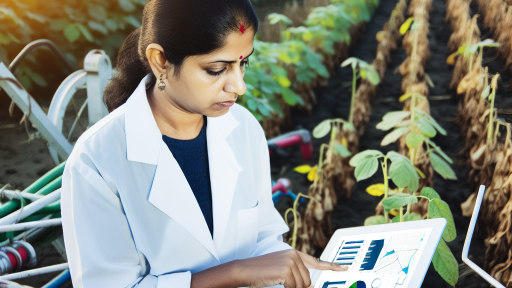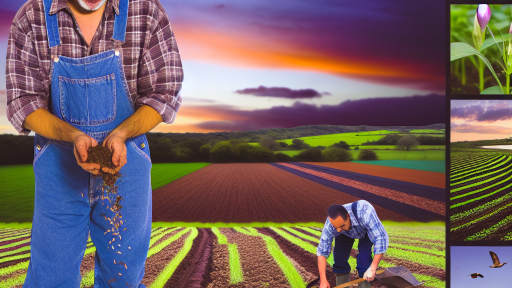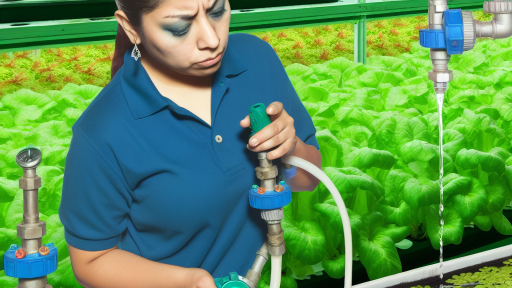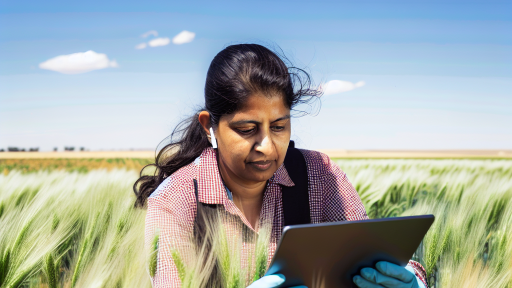Introduction to Crop Monitoring Technologies and Their Importance
Crop monitoring technologies have transformed agriculture in recent years.
Farmers now use advanced tools to enhance productivity and sustainability.
These technologies help in early detection of issues in crop health.
Thus, farmers can respond quickly to potential threats.
Additionally, accurate monitoring supports efficient resource management.
This approach minimizes waste of water, fertilizers, and pesticides.
Consequently, it reduces the overall environmental impact of farming.
With the global population increasing, food security is a major concern.
Crop monitoring technologies play a crucial role in addressing this challenge.
They provide real-time data and analytics to optimize yield.
Moreover, farmers can make informed decisions based on this data.
This leads to better management of agricultural practices.
Next, let’s explore some of the latest technologies in crop monitoring.
Satellite and Drone Technologies
Satellite imagery allows farmers to view large-scale farming operations.
It reveals trends in crop health and soil conditions over time.
Transform Your Agribusiness
Unlock your farm's potential with expert advice tailored to your needs. Get actionable steps that drive real results.
Get StartedOn the other hand, drones provide localized data with high-resolution images.
Farmers can assess specific areas of their fields more effectively.
Both technologies enable precise application of inputs like water and nutrients.
As a result, they enhance crop performance and minimize costs.
IoT and Sensor Technologies
The Internet of Things (IoT) connects various crop monitoring devices.
Sensors monitor environmental factors like soil moisture and temperature.
Data collected from sensors informs farmers about their plants’ needs.
This technology enables more timely interventions to secure crop health.
Consequently, it promotes smarter farming practices through automation.
Data Analytics and AI
Data analytics helps in interpreting vast amounts of field data.
Advanced algorithms identify patterns that might not be visible to humans.
Artificial Intelligence (AI) further enhances decision-making processes.
For instance, AI can predict pest outbreaks based on weather patterns.
This proactive approach improves resilience against crop failures.
Overall, integrating AI with crop monitoring leads to better yields.
Overview of Traditional Crop Monitoring Methods
Manual Inspections
Farmers often rely on manual inspections for crop monitoring.
This method involves walking through fields and visually assessing plant health.
Farmers check for pests, diseases, and nutrient deficiencies.
However, manual inspections are time-consuming and labor-intensive.
Additionally, they may miss subtle issues affecting crop health.
Field Scouting
Field scouting represents another common technique in crop monitoring.
Trained scouts systematically survey fields at regular intervals.
They gather data on factors such as soil moisture and plant growth.
While this method enhances data collection, it still has limitations.
Showcase Your Farming Business
Publish your professional farming services profile on our blog for a one-time fee of $200 and reach a dedicated audience of farmers and agribusiness owners.
Publish Your ProfileScouts might not cover vast areas efficiently.
Visual Aids and Tools
Farmers often use visual aids to enhance their monitoring efforts.
Simple tools like growth degree days can help estimate plant development.
Charting methods aid in tracking crop performance over time.
These tools offer essential insights but depend on accurate interpretation.
Thus, growers need training to utilize these aids effectively.
Weather Monitoring
Weather conditions significantly affect crop health.
Farmers traditionally depend on local weather stations for updates.
This method helps them understand climatic influences on their crops.
Nevertheless, localized weather variations can impact accuracy.
Farmers sometimes struggle to access real-time weather data.
Limitations of Traditional Methods
Traditional crop monitoring methods present several challenges.
They often do not provide timely data for effective decision-making.
Furthermore, manual methods can cause physical strain and fatigue.
Inaccuracies may arise from human error or subjective assessments.
Consequently, these limitations drive the need for advanced technologies.
Emerging Technologies in Crop Monitoring: Drones and UAVs
Introduction to Drones in Agriculture
Drones have revolutionized crop monitoring in modern agriculture.
These unmanned aerial vehicles (UAVs) improve efficiency and precision.
Farmers now use drones for various tasks beyond traditional methods.
Enhancing Data Collection
Drones facilitate real-time data collection for improved analysis.
They can capture high-resolution images from various angles.
This data helps in assessing crop health and growth stages.
Additionally, UAVs can identify areas needing immediate attention.
Precision Agriculture Techniques
Drones enable precision agriculture through advanced technologies.
Farmers can target specific fields with customized treatment plans.
Moreover, UAVs assist in managing resources such as water and fertilizers.
This targeted approach minimizes waste and increases yield.
Crop Health Monitoring
Advanced sensors on drones provide detailed crop health information.
They measure variables like plant reflectance and temperature.
This data allows for timely interventions in nutrient management.
Consequently, farmers can improve overall crop performance.
Cost Efficiency
Using drones significantly reduces operational costs.
They cover large areas in a fraction of the time required for manual checks.
Furthermore, drones lower the need for physical labor on farms.
This results in financial savings for farmers, enhancing productivity.
Case Studies of Successful Implementation
Several agricultural enterprises have embraced drone technology.
For instance, GreenFields Farm experienced a substantial yield increase.
They adopted UAVs for pest management and growth tracking.
Another example is Sunny Valley Farms, which optimized water usage.
Thus, they reduced costs while improving crop quality.
Showcase Your Farming Business
Publish your professional farming services profile on our blog for a one-time fee of $200 and reach a dedicated audience of farmers and agribusiness owners.
Publish Your ProfileFuture Trends in Drone Technology
The future of drones in agriculture looks promising.
Technological advancements are set to enhance their capabilities.
Innovations like AI integration will improve data analytics.
Moreover, farmers will benefit from more user-friendly drone systems.
This evolution will further revolutionize crop monitoring practices.
Uncover the Details: Effective Storage Solutions for Fresh Produce
Precision Agriculture: Use of IoT Sensors for Real-Time Data Collection
Introduction to IoT Sensors in Agriculture
IoT sensors play a crucial role in precision agriculture.
They collect valuable data from the field in real-time.
This technology enhances decision-making for farmers.
Types of IoT Sensors Used in Crop Monitoring
Soil moisture sensors measure water content in the soil.
Temperature and humidity sensors track environmental conditions.
Light sensors monitor sunlight exposure for plants.
Additionally, nutrient sensors assess soil fertility.
Benefits of Using IoT Sensors
IoT sensors help farmers optimize resource usage.
They reduce water wastage by providing precise moisture data.
Moreover, these sensors enhance crop yield through timely interventions.
This technology also supports sustainable farming practices.
Challenges in Implementing IoT Sensors
Despite their benefits, IoT sensors face several challenges.
Connectivity issues in rural areas can hinder data transmission.
Moreover, initial setup costs may be high for small farmers.
Additionally, farmers need proper training to utilize these technologies.
Future Trends in IoT Crop Monitoring
The future of IoT in agriculture looks promising.
Emerging technologies like AI will enhance data analysis.
Integration with drones will provide aerial data collection.
Furthermore, machine learning algorithms will predict crop performance more accurately.
Discover More: Integrated Pest Management Forecasting Techniques
The Role of Artificial Intelligence in Analyzing Crop Health
Introduction to AI in Agriculture
Artificial Intelligence has revolutionized many sectors, including agriculture.
Farmers increasingly rely on AI to optimize crop management.
This technology enhances efficiency while reducing costs.
Monitoring Crop Health
AI tools help in the early detection of plant diseases.
Farmers can monitor crop health using satellite imagery.
Drone technology also plays a significant role in this process.
AI analyzes visual data to assess the condition of crops.
It identifies areas needing attention through detailed algorithms.
Predictive Analytics for Crop Management
AI algorithms can predict weather patterns accurately.
This information assists farmers in planning planting schedules.
Moreover, AI-driven models forecast potential yield outcomes.
Consequently, farmers can make informed decisions to enhance yield.
Integration with IoT Devices
The Internet of Things complements AI in crop monitoring.
Sensors collect real-time data about soil moisture and nutrients.
Showcase Your Farming Business
Publish your professional farming services profile on our blog for a one-time fee of $200 and reach a dedicated audience of farmers and agribusiness owners.
Publish Your ProfileThis data feeds into AI systems for comprehensive analysis.
Farmers receive actionable insights directly from their devices.
Case Studies and Innovations
Numerous organizations are successfully integrating AI in agriculture.
AgriTech Solutions has developed a predictive model for corn health.
Farmers using this model reported a 20% increase in yield.
Similarly, GreenField Technologies utilizes drones for crop surveillance.
This innovative approach has significantly reduced pesticide usage.
Challenges and Future Directions
Despite its benefits, challenges exist in adopting AI by farmers.
Cost and technical expertise remain significant barriers.
Additionally, data privacy concerns must be addressed.
Future advancements will likely focus on user-friendly interfaces.
As technology evolves, AI will reshape agriculture further.
See Related Content: Leveraging Big Data For Crop Management Success
Satellite Imaging and Remote Sensing for Large-Scale Monitoring
Overview of Satellite Imaging
Satellite imaging revolutionizes crop monitoring methods today.
This technology provides coverage for large agricultural areas.
Moreover, it captures data in real-time, facilitating immediate analysis.
Advantages of Remote Sensing
Remote sensing enhances the accuracy of agricultural assessments.
Farmers can identify crop health and soil conditions effectively.
Additionally, it aids in detecting pests and diseases earlier.
This early detection minimizes crop losses significantly.
Types of Remote Sensing Technologies
- Optical remote sensing captures visible light and infrared wavelengths.
- Radar remote sensing penetrates clouds, providing consistent data.
- Lidar technology measures distances using laser pulses.
Each technology plays a vital role in comprehensive crop analysis.
Applications in Precision Agriculture
Farmers leverage these technologies for precision agriculture practices.
They utilize specific data to enhance resource management.
For instance, satellite data informs irrigation scheduling.
This optimization leads to water conservation and improved yield.
Integration with Other Technologies
Satellite imaging integrates seamlessly with drones and sensors.
Drones provide detailed imagery over smaller areas as needed.
When combined, these technologies offer a holistic view of fields.
This integration supports informed decision-making.
Future Trends in Crop Monitoring
The future of satellite imaging appears promising and dynamic.
Emerging technologies will enhance data processing capabilities.
Moreover, artificial intelligence will play a pivotal role in analysis.
These advancements will further provide actionable insights for farmers.
Discover More: Future Trends In Crop Monitoring And Analytics
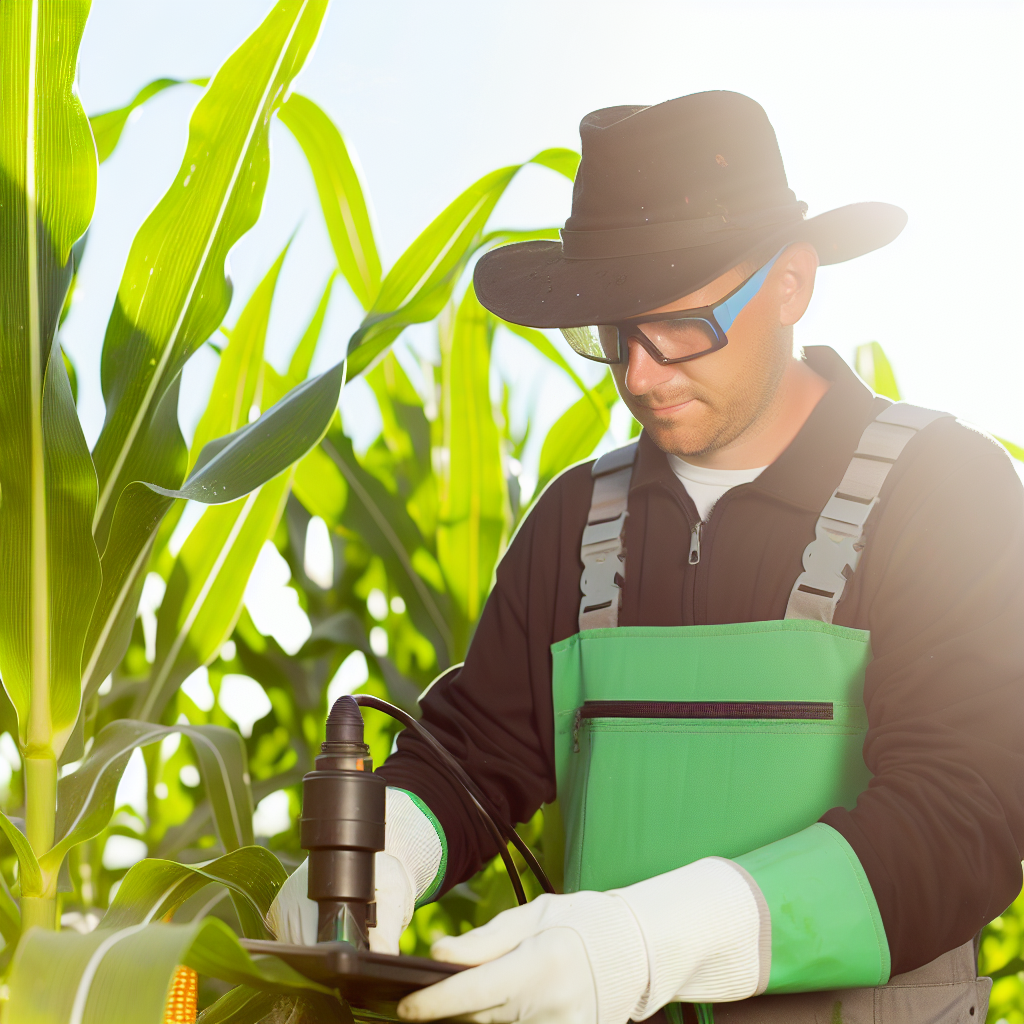
Impact of Machine Learning on Predictive Analytics in Agriculture
Introduction to Predictive Analytics
Predictive analytics uses historical data to predict future outcomes.
In agriculture, it identifies trends affecting crop yields.
This technology enhances decision-making for farmers.
The Role of Machine Learning
Machine learning algorithms can analyze vast amounts of agricultural data.
They identify patterns that traditional methods may overlook.
Subsequently, this leads to improved crop management strategies.
Showcase Your Farming Business
Publish your professional farming services profile on our blog for a one-time fee of $200 and reach a dedicated audience of farmers and agribusiness owners.
Publish Your ProfileData Sources for Machine Learning
Farmers utilize various data sources for insights.
Remote sensing provides crucial information on soil moisture.
Weather prediction models offer forecasts essential for planning.
Additionally, historical yield data aids in modeling crop performance.
Algorithms Used in Predictive Analytics
Machine learning employs several algorithms for analysis.
Decision trees help visualize crop decision pathways.
Neural networks model complex relationships in data.
Linear regression analyzes the impact of various factors on yields.
Benefits of Machine Learning in Agriculture
Integrating machine learning leads to enhanced precision agriculture.
Farmers can optimize resource usage and reduce wastage.
Moreover, it helps in early detection of crop diseases.
Ultimately, these advancements increase overall productivity.
Real-World Applications
Several companies realize the potential of machine learning.
AgriTech Innovations uses predictive models to enhance yield forecasts.
GrowSmart Systems applies data-driven insights to optimize irrigation.
Farm Analytics integrates various technologies for comprehensive analysis.
Challenges in Implementing Machine Learning
Data quality remains a significant challenge in predictive analytics.
Inconsistent or incomplete data can lead to inaccurate predictions.
Furthermore, farmers might face difficulties in adopting new technologies.
Training and support are crucial for successful implementation.
The Future of Predictive Analytics in Agriculture
The future looks promising for predictive analytics in agriculture.
Innovations in artificial intelligence will enhance machine learning capabilities.
As technology evolves, more farmers will adopt these tools.
Ultimately, this revolutionizes crop monitoring and management.
Integration of Blockchain Technology for Data Transparency and Traceability
Understanding Blockchain Technology
Blockchain technology serves as a distributed ledger.
It enhances data integrity and security across various applications.
This technology plays a crucial role in crop monitoring.
Farmers and suppliers benefit from immutable data storage.
Enhancing Data Transparency
Blockchain increases transparency within the agricultural supply chain.
All stakeholders can access real-time data easily.
This access helps in verifying product history and sourcing.
Consequently, consumers gain trust in the quality of their food.
Improving Traceability
Traceability allows quick identification of sources during crop recalls.
Blockchain technology tracks every transaction throughout the supply chain.
In addition, it records actions from planting to harvest.
Farmers can monitor conditions affecting their crops effectively.
Implementing Blockchain Solutions
Implementing blockchain in agriculture requires collaboration.
Tech companies, farmers, and government bodies must work together.
Several startups are already integrating these technologies.
For example, AgriDigital provides blockchain solutions to farmers.
Showcase Your Farming Business
Publish your professional farming services profile on our blog for a one-time fee of $200 and reach a dedicated audience of farmers and agribusiness owners.
Publish Your ProfileFuture Prospects
The future of crop monitoring looks promising with blockchain.
As adoption increases, data sharing will become more efficient.
Ultimately, this technology may revolutionize food safety regulations.
The focus will remain on enhancing the sustainability of food systems.
Challenges and Limitations of Current Crop Monitoring Technologies
Technological Complexity
Current crop monitoring technologies often require specialized training.
Farmers may struggle to interpret complex data outputs.
This complexity can lead to underutilization of available tools.
High Costs
Investing in advanced monitoring systems can be prohibitively expensive.
Small and medium-sized farms often lack the necessary funds.
This financial barrier limits access to cutting-edge technologies.
Data Overload
Crop monitoring systems produce vast amounts of data.
Farmers may find it challenging to process and understand this data.
Consequently, critical insights can be overlooked.
Infrastructure Limitations
Many rural areas lack the necessary infrastructure for effective monitoring.
Reliable internet access is vital for data transmission.
Inconsistent connectivity can disrupt monitoring efforts.
Environmental Variability
Different climates demand tailored monitoring solutions.
Current technologies may not adapt well to diverse environments.
This limitation can affect the accuracy of data collected.
Regulatory Challenges
Farmers often face stringent regulations regarding data usage.
These rules can complicate data sharing and integration.
Compliance with varying regulations can be overwhelming.
Adoption Resistance
Some farmers are hesitant to adopt new technologies.
Following traditional practices often feels more comfortable.
Building trust in new systems remains a critical challenge.
Integration with Existing Systems
Many farms use legacy systems that do not integrate easily.
This incompatibility can lead to operational inefficiencies.
Seamless integration is vital for effective monitoring.
Future Trends and Innovations in Crop Monitoring Technologies
Integration of AI in Crop Monitoring
Artificial Intelligence is revolutionizing crop monitoring systems.
It enhances decision-making based on real-time data analysis.
Farmers can predict crop yields with greater accuracy than before.
Moreover, AI detects plant stress and disease early.
This leads to timely interventions and improved harvests.
Use of Drones and Aerial Imaging
Drones are becoming a vital tool in agriculture.
Their aerial imaging provides detailed insights into crop health.
Farmers can monitor large fields quickly and efficiently.
This technology helps in identifying irrigation needs.
Additionally, drones assist in assessing pest outbreaks.
Advancements in Soil Sensors
Soil sensors play an essential role in precision farming.
These sensors measure moisture, temperature, and nutrient levels.
Showcase Your Farming Business
Publish your professional farming services profile on our blog for a one-time fee of $200 and reach a dedicated audience of farmers and agribusiness owners.
Publish Your ProfileReal-time data allows farmers to optimize resource usage.
Consequently, this improves crop yields and sustainability.
Farmers benefit from tailored irrigation and fertilization practices.
Development of Mobile Applications
Mobile apps are streamlining crop monitoring processes.
Farmers easily access important data from their smartphones.
These apps facilitate communication with agricultural experts.
They also enable tracking weather patterns and forecasts.
As a result, farmers make informed decisions promptly.
Focus on Sustainability
Sustainability is at the forefront of agricultural technology.
New monitoring technologies promote eco-friendly practices.
Farmers are increasingly adopting methods to reduce waste.
This emphasis on sustainability benefits the environment.
Additionally, it ensures food security for future generations.

